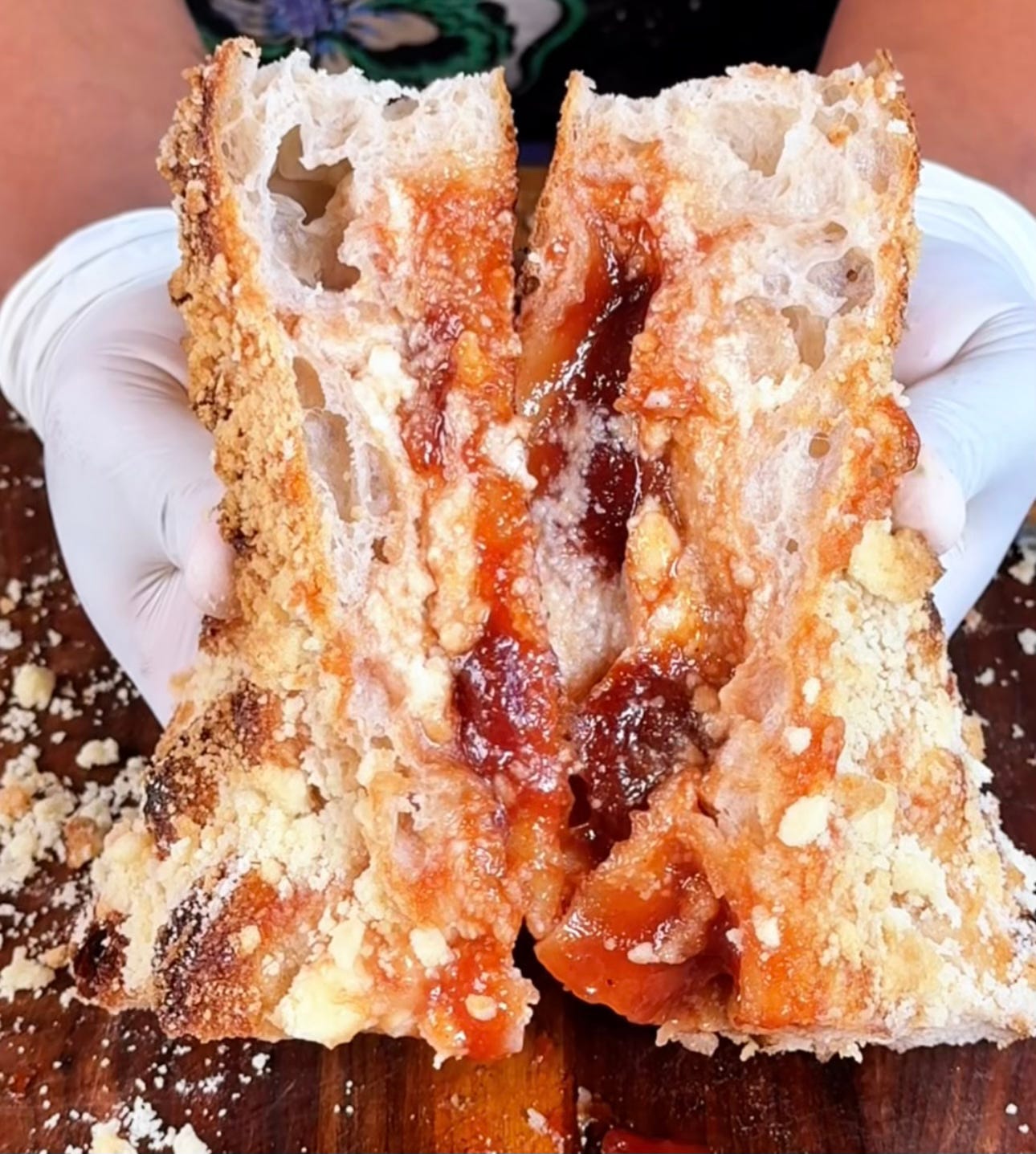Focaccia Frenzy #1 - Guava & Cheese
and a brief pause to live workshops due to the upcoming birth of my son
If you’ve seen my social media lately, you know that it’s been what I am now calling a “Focaccia Frenzy”. As such, I’m going to be sharing a series of mostly Caribbean inspired focaccia recipes exclusively here for you. But seriously, look up the definition of the word frenzy:
a state or period of uncontrolled excitement or wild behavior.
I think we can all agree that I have been both uncontrolled and excited - most probably because my baby boy is due any minute now (literally). On that note, before moving into more about this particular focaccia, I’ll have to make an adjustment to the live workshop schedule to accommodate my new Dad Duties. I’ll be taking a bit of a leave, and we will pick our workshops back up in early June. Stay tuned for the date and recipe for that to be posted.
Now, in my quest for superior focaccia flavor combinations, this decision felt like a no-brainer. In Caribbean and Latin American baking, the combination of guava and cheese shines the brightest when stuffed between flaky layers of hojaldre (you can find my traditional pastelito recipe in my book Pan y Dulce: The Latin American Baking Book). I have opted to make this focaccia using sourdough and a pinch of yeast to make sure it has elements of lightness in each bite, but if you want to opt for a simple yeasted focaccia you can also do that (the recipe will tell you the yeast modification to make accordingly). Have fun with this one! The recipe is attached as a PDF, but see below a few tips and notes about making focaccia.
How Do I Make The Dough?
The best way to make the dough base for this focaccia is with a stand mixer, and in my case I am using the Ooni Halo Pro Spiral Mixer. I have so many good things to say about this mixer, as it allows me to bake like a professional from the comfort of my own home. Because it is a highly hydrated dough, I find that using a mixer helps make the dough making process quite simple compared with hand mixing and the waiting periods you would need to undergo for a dough that is 85% hydrated. The key to making a highly hydrated dough is to make sure that you are adding the water in increments and not all at once. This allows the gluten network to develop properly without getting overloaded.
What Type of Guava Do I Need?
There are many forms of Guava that you can find at most grocery stores. You'll have more success if you seek out an international store, or a larger market that is reputable for carrying unique products from different cultures.
What Type of Flour Do I Need?
Flour is the most important ingredient in baking – there is no way around that fact, especially when it comes to breads, pizzas, and flatbreads. If you want something to taste good, start by making sure you are using a high quality flour. At the very least, make sure the flour is not bleached or bromated. If you have access to a farmers market or organic grocery store, chances are you’ll be able to find some high quality flour there.
In terms of the specific type of flour you want to use for focaccia, a “bread flour” works best as the primary flour, complimented by a percentage of whole wheat flour and all purpose flour. This balance of strength, softness, and whole grain flavor makes my recipe as close to perfect as one can get.
What Kind of Yeast Do I Need?
In addition to the sourdough, here are the types of yeast you can use in combination to make this recipe.
Instant Yeast
Active Dry Yeast
Fresh Yeast
Instant Yeast
Instant yeast is probably the most common type of yeast you might find at the grocery store or already in your kitchen cabinet. This is a dry yeast that doesn’t need to be proofed or manipulated in any way before adding it straight to your dough.
Active Dry Yeast
Although just as common as instant yeast, for it to be the most effective, it is best to proof it in warm water for a few minutes before adding it to your dough. This extra step is not that big of a deal, but skipping it means you won’t get the best rise out of your breads.
Fresh Yeast
This is probably the least commonly used yeast in the U.S. by home bakers, but select grocery stores might have it in their refrigerator section. Fresh yeast has about a 1-2 week usability life, but it gives off a unique creamy/milky flavor profile that I absolutely love using in my doughs. You also will want to multiply the quantity of instant/active dry yeast by 3 to get your fresh yeast number as you will need slightly more by weight to match up.
Enjoy this recipe! And make sure you share, like and subscribe to my newsletter for more to come.




